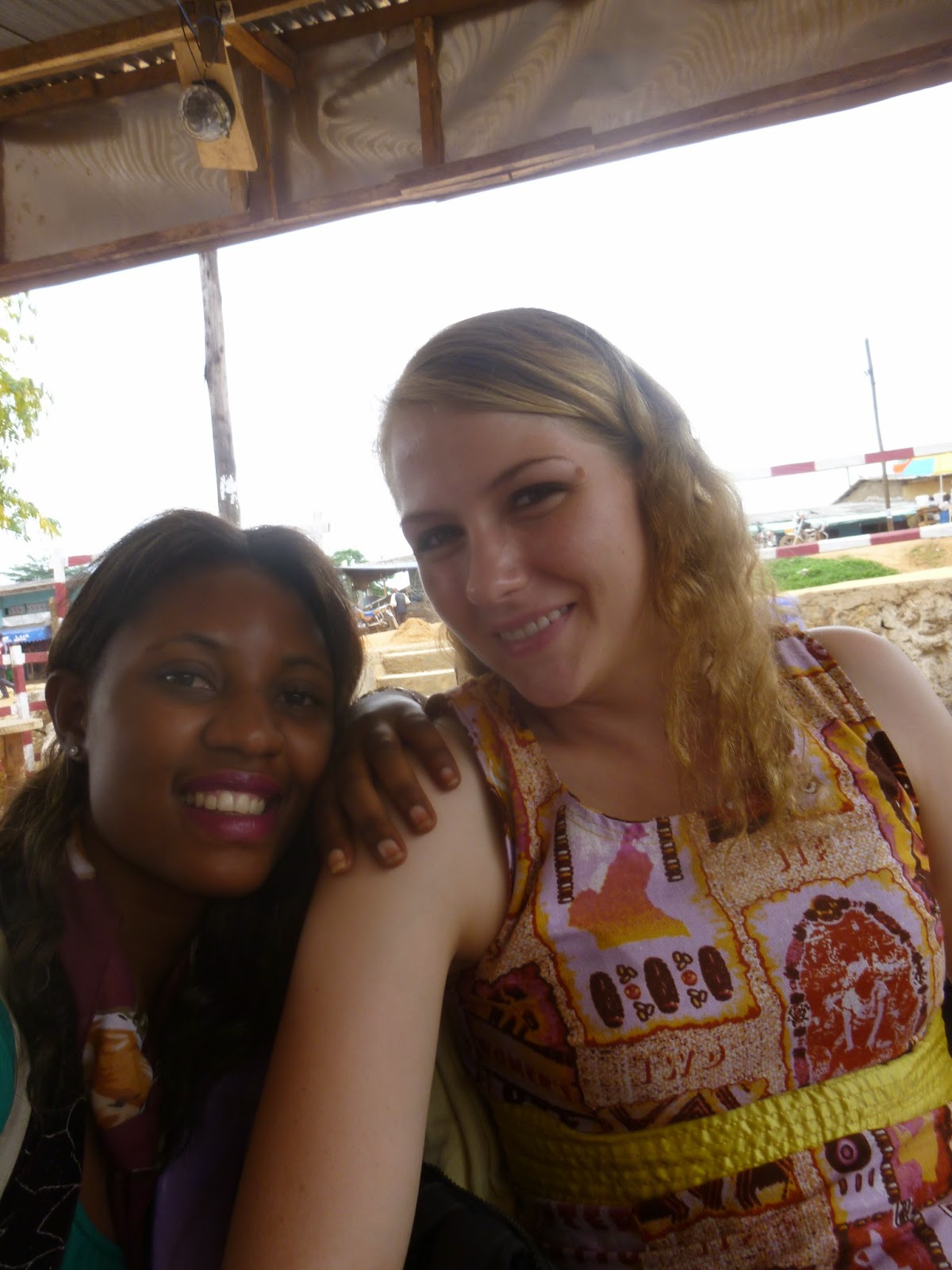 |
| View of Lake Nyos from on top of the cliffs. |
 |
| Governor's entourage standing at the dam. |
I did my protocol
and then tried to find anyone who could tell me anything about the types of
natural hazards experienced by the North-West. (I was interested because I am
currently going for my master's in Mitigation of Natural Hazards, in case you
weren't aware). I was not having much luck. Then finally the Head of Protocol
told me that the person who dealt with those things was preparing for a very
big meeting the next day and that he could take my number and inform me when
the person might be available to talk to me. So, I gave him my number and went
back to wait for my meeting.
The next day, August
21st, the Head of Protocol called me and told me that there was going to be a
very important meeting that day about the very things I was asking about and
that it was going to start soon so I should come right away. I was at work so I asked my counterpart if I could go and I
went. When I arrived at the governor's office I was shown into the conference
hall and told to sit in the audience. There were camera crews, delegates, the
mayor of the North-West region, and many other important people. Apparently it
was the anniversary of the Lake Nyos Disaster in 1986 and the government was
giving some continuing disaster relief to the people of the affected areas.
This meeting was a press conference for the governor of the North-West region
to announce what was being given and when, and to announce that he would
be traveling to meet the Senior
Divisional Officer and other delegates at Lake Nyos for an official ceremony of
handing over the disaster relief. The governor announced that everyone present
at that meeting was invited to come to witness the occasion! So, after the
meeting I asked just to be sure that I was included in that invitation and I
was!
The following
morning I went very early to the governor's office to wait for the group to
leave. Almost everyone had shown up. I was in the Head of Protocol's truck, the
one he was in not his personal one, with the Head of Protocol, the driver, a
news reporter, and three camera men. Yes, this was all in one small Toyota
pick-up truck. Finally, we were on our way! The drive was to take five hours
and we were getting a late start at 9am, especially since we had to make it
back the same day. So, the convoy of trucks and cars and SUVs (almost all
Toyota, as most vehicles in Cameroon are) went speeding through the jungle,
plains, and hills in the sun and streams and mud and rain. Finally we came to
the last hill, at the top of which was Lake Nyos. We went up and everyone got
out to look around.
 |
| Guard houses a Lake Nyos. |
The lake is in a
crater so it is surrounded by cliffs and hills on all sides except at one point
where it lets out and a dam has been built. The plan for the dam is to make it
a hydro electrical power plant. From the top of the cliffs around the lake the
three de-gassing pipes can be seen sticking out of the water at the center of
the lake. By using these pipes the dangerous gas in the lake has been reduced
by about 80%.
 |
| Cliffs around Lake Nyos. |



.JPG)

.JPG)
.JPG)
.JPG)












